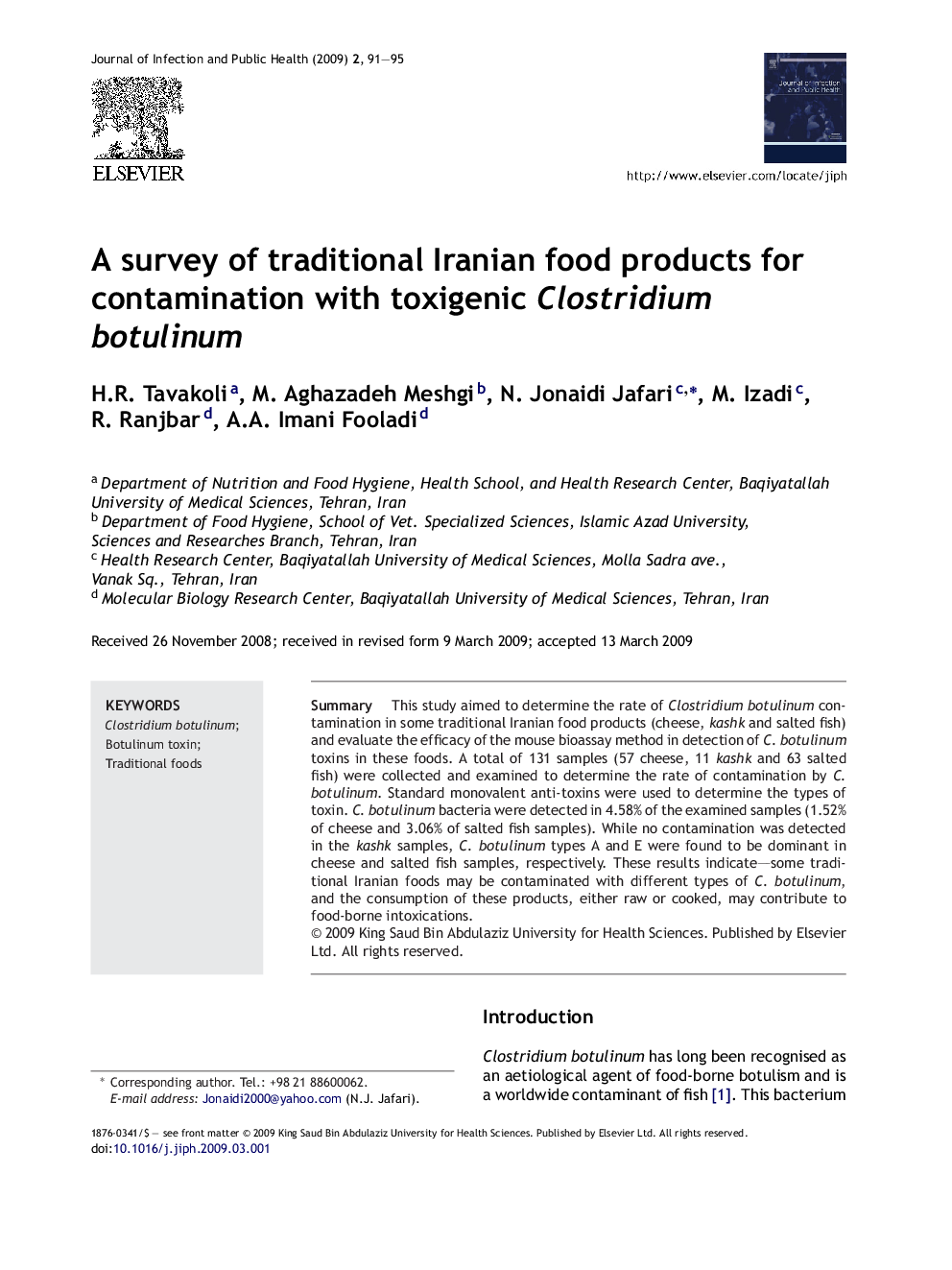| Article ID | Journal | Published Year | Pages | File Type |
|---|---|---|---|---|
| 3406396 | Journal of Infection and Public Health | 2009 | 5 Pages |
SummaryThis study aimed to determine the rate of Clostridium botulinum contamination in some traditional Iranian food products (cheese, kashk and salted fish) and evaluate the efficacy of the mouse bioassay method in detection of C. botulinum toxins in these foods. A total of 131 samples (57 cheese, 11 kashk and 63 salted fish) were collected and examined to determine the rate of contamination by C. botulinum. Standard monovalent anti-toxins were used to determine the types of toxin. C. botulinum bacteria were detected in 4.58% of the examined samples (1.52% of cheese and 3.06% of salted fish samples). While no contamination was detected in the kashk samples, C. botulinum types A and E were found to be dominant in cheese and salted fish samples, respectively. These results indicate—some traditional Iranian foods may be contaminated with different types of C. botulinum, and the consumption of these products, either raw or cooked, may contribute to food-borne intoxications.
